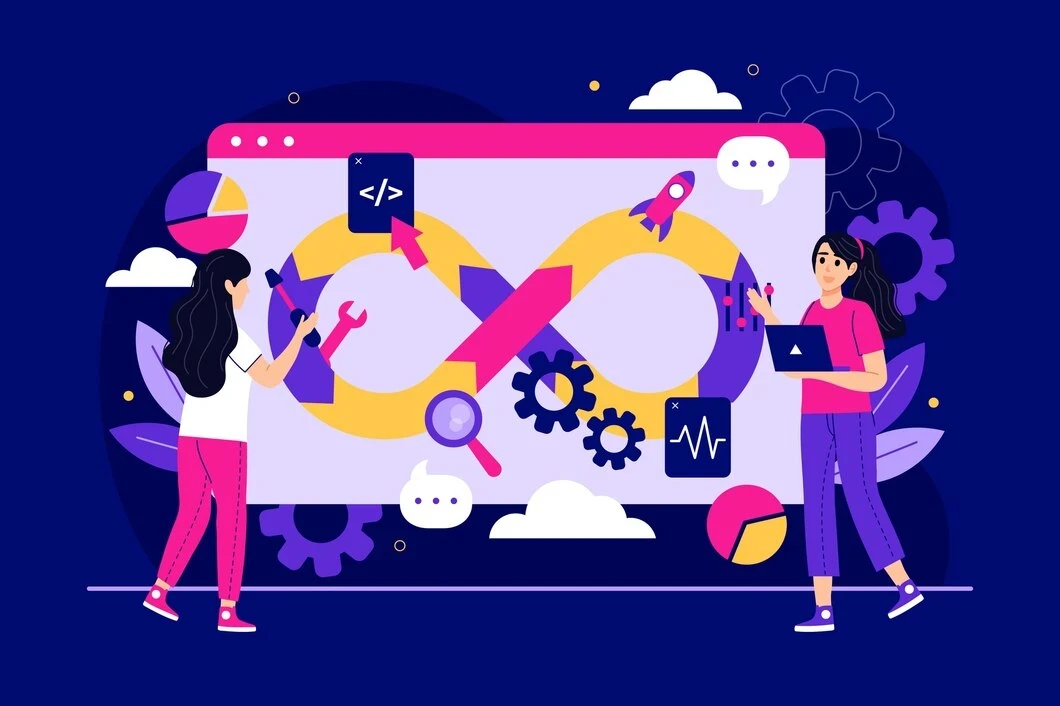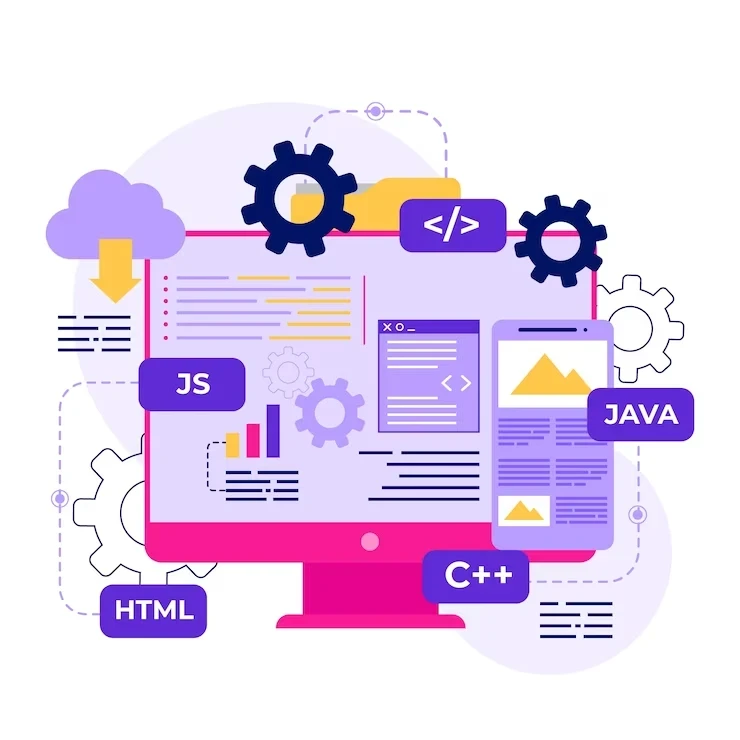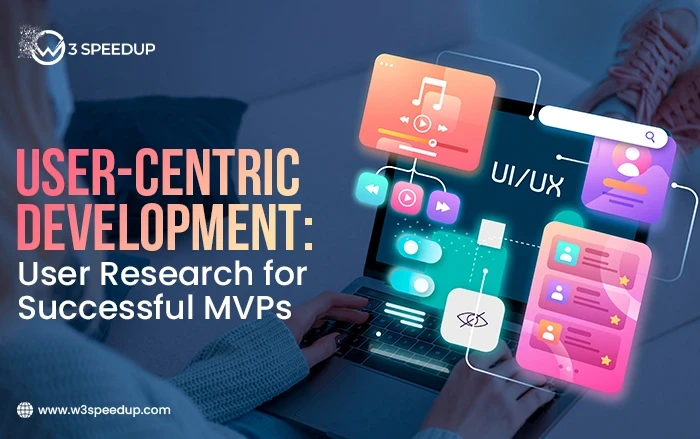Innovation drives the tech sector, constantly exceeding expectations and choosing new ideas. Before releasing the next great factor, you need to keep in mind that user-centric development could be the cornerstone of success. This informative article explores the primary from the methodology, highlighting the critical role that user research plays in developing Minimum Viable Products (MVPs) that meet user needs and get market fit by 2024.
Definition of MVP Development
A “Minimum Viable Product” is one thing in the latest version that has only the essential functionality required to fulfill early adopters. It’s your product’s first iteration, reduced towards the fundamental elements, designed to verify your opinions, get user input, and boost the idea.
With the right strategy, MVP development can help you launch a digital product like a website or app with the least amount of work, money, and time. It acts as a test bed to see if your idea for a product has what it takes to be successful in the real world. However, developing an MVP that speaks to people and adds value necessitates a thorough comprehension of your target market.
The Importance of User Research in MVP Development

The MVP is promoted during the period of the pc sector from the simple prototype to some sophisticated product version with only enough features to draw in early adopters. However, user research supports the answer to the prosperity of MVPs. It isn’t just an option; rather, it can serve as the premise for lucrative MVPs.
 1. Understanding User Needs and Pain Points
1. Understanding User Needs and Pain Points
The primary objective of user scientific studies is to build up an individual relationship together with your audience. It requires researching their preferences, behavior, and discomfort areas to produce a product which genuinely meets their wants. You will get insightful information from user research that can help you build up your MVP.
 2. Validating Product Ideas and Assumptions
2. Validating Product Ideas and Assumptions
Assumptions frequently inform product concepts at the beginning of phases of MVP development. Even though you think users will love a specific feature or service, you’re blindly navigating without confirmation. This really is really the sweet spot for user research. It enables you to definitely verify the technique is in line with what your audience wants by putting your assumptions for the test.
 3. Ensuring Product Relevance and Market Fit
3. Ensuring Product Relevance and Market Fit
User research continues completely with the product lifecycle, not only noisy . phases from the MVP. This continuous interaction with users guarantees that the product stays current and in line with the altering requirements of the marketplace. You might improve your odds of reaching product-market fit-a vital milestone for just about any startup-by modifying to satisfy evolving user needs.
User Research Methods for MVP Development
Now that we’ve demonstrated how important user research is to the creation of MVPs let’s look at some of the best user research techniques you can utilize in 2024 to obtain a competitive advantage:
- User Interviews. Interview prospective users one-on-one to learn more about their ideas, interests, and problems. Qualitative insights from these interviews can help you create your MVP.
- User Surveys. To gather quantitative data from a wider user base, create surveys. Surveys are an effective way to get input on certain features, preferences, and user behavior.
- Usability Testing. Watch how users engage with your early version or MVP prototype. Usability testing shows you where your product needs work and shows you how people interact with it.
- A/B Testing. To compare several iterations of your MVP with actual users, use A/B testing. Using this technique, you may determine which elements or layouts appeal to your audience the most.
- Eye Tracking. Eye-tracking technology can aid with layout and design optimization for web and app developers by giving valuable insights into user attention patterns.
Integrating User Research into the MVP Development Process

Creating a good Minimum Viable Product (MVP) involves not only adding features. Integrating user research into the development process is important to making something that attracts users and finds market fit. You may create an MVP that succeeds within the cutthroat IT industry by positively getting together with people, understanding their demands, and iterating according to their input.
 1. Defining User Personas
1. Defining User Personas
User personas are imaginary representations from the audience. They embody your ideal users’ traits, actions, and objectives. An essential starting point in designing an MVP that genuinely connects along with your audience is developing user personas, which assists you realize and fasten together.
Remember that you’re developing a smartphone application for travelers. User personas might be “Business Traveler Ben,” who demands efficiency and convenience, and “Adventure-Seeking Sarah,” who values encounters however road. By creating these personas, you might modify your MVP to satisfy each persona’s particular needs and preferences.
Data analysis, surveys, and user interviews will be the qualitative and quantitative research methods based on the introduction of user personas. The aim should be to collect data that gives an apparent picture in the users to make certain that every development and elegance choice aligns with their needs.
 2. Identifying User Jobs and Goals
2. Identifying User Jobs and Goals
It’s vital to understand what users aspire to accomplish making use of your MVP. This really is working out their “jobs to become done” and objectives. Employment to become done is really a particular task or issue that buyers make an effort to resolve together with your solution. Understanding these roles allows you to create features that directly satisfy the demands of users.
Utilizing the same travel application example, “Adventure-Seeking Sarah” can result in finding unusual places to go to, while “Business Traveler Ben” needs to arrange flights economically. You are able to give such things as a tailored recommendation engine for Sarah as well as an expedited booking process for Ben’s main concern by identifying these jobs.
 3. Incorporating User Feedback into Iterations
3. Incorporating User Feedback into Iterations
Once you have acquired some preliminary insights, user research never ends. Every phase of MVP development should incorporate this continuous process. Getting comments from customers regularly is essential to developing something which men and women love.
To accomplish this, consider agile development approaches that highlight adaptation and continual improvement, for instance Scrum or Kanban. Using these approaches, you’ll be able to divide your MVP into more manageable, smaller sized iterations, each adopted by user testing and feedback gathering.
 4. Measuring User Satisfaction and Engagement
4. Measuring User Satisfaction and Engagement
Beyond simply creating features that individuals want, user-centric development also involves gauging their degree of participation and happiness. Monitoring important metrics allows you to assess your MVP’s performance and identify development areas.
Some common metrics to consider include:
- Customer Satisfaction Score (CSAT). An indicator based on surveys that gauges how satisfied users are with your MVP overall.
- Net Promoter Score (NPS). Indicates the chance of consumers suggesting your product to others.
- User Engagement. Tracks how often and in what ways people engage with your MVP. Daily active users (DAU), monthly active users (MAU), and session time are examples of metrics.
- Rate of Conversion. It evaluates the degree to which your MVP persuades people to perform desired actions, such as registering, buying something, or sharing content.
- Rate of Churn. The percentage of people who discontinue using your MVP over time. Elevated turnover rates could be a sign of deeper problems.
- Retention of Users. Measures your MVP’s capacity to retain users over time. There’s a greater chance that users will stick around.
You might assess the aftereffect of your MVP on users making data-driven decisions to enhance their experience by continuously tracking these indicators.
Conclusion
In 2024, creating effective MVPs needs a fundamental method of user-centric development. By user research of your MVP development process, you can be certain that the product will satisfy user needs, support user goals, and encourage user engagement.
Recall that performing user research requires constant dedication and isn’t a 1-time effort. It’s important to consistently establish user personas, pinpoint tasks, obtain input, and assess user contentment. Adopt an iterative development procedure that adjusts to user insights and makes decisions according to details.
 Read More: Outsourcing Vs. In-House Design Team: Choosing The Optimal Option For Your Enterprise
Read More: Outsourcing Vs. In-House Design Team: Choosing The Optimal Option For Your Enterprise
 Read More: Benefits Of Hiring PHP Developers For Your Business
Read More: Benefits Of Hiring PHP Developers For Your Business


